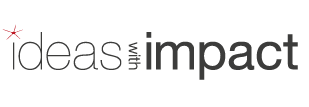How Are Your Events Driving Behavioral Change?
One of the interesting ways we help our clients make a bigger impact is to help them find areas that they can encourage their customers or employees to change ineffective behaviors or beliefs that are hindering their greatest success. We call this driving behavioral change.
When we sit down with a new management team to talk about behavioral change, 90% of the time they are aware of the root problem within their business and can describe the symptoms their teams are experiencing. Sometimes the executive team will have a clear idea of how to begin tackling the issue at hand, but when it comes to creating an environment that encourages employees or customers to step out of deeply entrenched thinking or let go of deeply held beliefs, creating behavioral change can get tricky.
Successful brands confront these deeply held beliefs or entrenched habits that no longer serve the company’s goals. They face them head on, and directly — often kicking off with an event to shake up the “norm” and start more productive habits or beliefs on a fresh foot.
Here are five strategies that Ideas with Impact brings to each event to drive productive change that will last far longer than the event:
 It’s a balance: During seasons of change, it can be tempting to change everything, or “go back to the drawing board.” And while this fresh thinking is productive, successful behavioral change will affect desired thought or action patterns, but will not compromise the pillars of the brand. During kick-off meetings, Ideas with Impact relies on extensive Discovery Sessions to learn and understand everything possible, including attending branding classes, conversations with the sales team to the product department to marketing to the technology and demo teams. The first step to creating behavioral change is knowing the brand, so we can understand how proposed changes will affect the long term.
It’s a balance: During seasons of change, it can be tempting to change everything, or “go back to the drawing board.” And while this fresh thinking is productive, successful behavioral change will affect desired thought or action patterns, but will not compromise the pillars of the brand. During kick-off meetings, Ideas with Impact relies on extensive Discovery Sessions to learn and understand everything possible, including attending branding classes, conversations with the sales team to the product department to marketing to the technology and demo teams. The first step to creating behavioral change is knowing the brand, so we can understand how proposed changes will affect the long term.- Look Beyond the Event Itself: When we work with clients we look at pre-event, the event itself, and post-event. Before the event can happen, first we look at what we can deliver to the attendees that will make them excited to attend and want to know more. Once we get the attendees to the event, we have to be on-message and support all of the touch-points, while staying true to the brand. And after attendees leave, we work to ensure that the message is carried forward. Lasting behavioral change comes from action over time, so when planning an event, you must understand what metrics are important, and devise long-term vehicles to get the right results.
- Know The Audience: Particularly when creating change internally to your company, knowing who is on the other end of the message will lead to deeper impacts. A few key questions to ask are, “What is your culture today? Who are we speaking to? Who are they speaking to?” Knowing the answers to these questions will help understand potential issues derived from the intended change, and allow you to get out in front of those things. This will also allow you to craft a message more tightly targeted to your audience.

- The Message Must be Believable: As with any message, keeping it clear and concise is critical. But especially when asking constituents to embrace new ways of thinking, they must believe the message. And often times making a message believable means being incredibly honest. We’ve worked with executives who have felt pressure to be “more serious” or “more business-like” during these change meetings. They’ll stop joking, abandon their light-hearted nature, or turn very proper. This is often met with skepticism. In order for the message to resonate, the audience has to believe it. And in order for them to believe it, the message must be clear on why, when and where the business wants to go, what their endgame and expectations look like — and it must be done in an authentic voice.
- The Audience Must Feel Seen and Heard: One example I can share about driving behavioral change comes from a company that was having trouble maintaining stock in their product lines. As a result, the sales team was missing its sales target and it would take months before their orders were fulfilled and therefore commissions were delayed as well. Executives knew they had to straighten out their product issue, but even more importantly, they had to lift morale of the sales team and rebuild trust.
One of the strategies we used with this client-centered on making the sales team feel both seen and heard by the executive team. The event positioned the sales team as the heroes of the company – “Everyday Heroes”. The stage set was a Gotham City skyline and we created an opening video that revealed the conference theme in an energetic video mash-up style and the finale featured each person on the sales team in the gallery of heroes. From the outset, the EVP of Sales was authentic in addressing the company challenges and the effects on the sales force. To facilitate this candid conversation an audience plant, “The Interrupter,” inserted himself into the opening remarks and asked pointed questions – the kinds of thoughts that were on everyone’s minds but culturally people wouldn’t typically ask, especially not in a group setting.
The executive team was preemptively asking those hard questions in front of the company, showing that they not only saw the frustrations, but they heard the concerns and were going to address them.
Throughout the event, we made sure to have employee advocates that stood on the hero stage in the middle of the audience and shared their personal stories of heroic efforts they had used to overcome sales obstacles.
During breakouts, there were similar threads of questions coming from many groups. To reinforce that the executive team was listening, (with one hours notice) we created a Pop-Up General Session. In this session, the panel of executives addressed those similar threads from audience’s questions. This immediate action again reinforced the executives were listening and committed to the sales organizations’ success.
This meeting was a turning point for the sales team and by the end of the year their sales numbers were above plan and morale had shifted significantly. The following year this sales team was chosen to represent a newly FDA approved drug.
Every company on some level faces adversity within and has to confront change. Without these moments, brands cannot evolve in impactful ways. We’ve enjoyed working with brands who have leaned into these times of change to create meaningful shifts in the way their teams and customers approach their business.
Creating these magic moments of impact that allows a brand to evolve and change is why Ideas with Impact exists. It’s our job. But more than that it’s our mission and our passion. We love looking for ways to open clear channels of communication to bring your voice through — centered and crystal clear.
If you’re looking to make a behavioral shift on your team or are facing a time of change, we look forward to hearing from you ([email protected])



